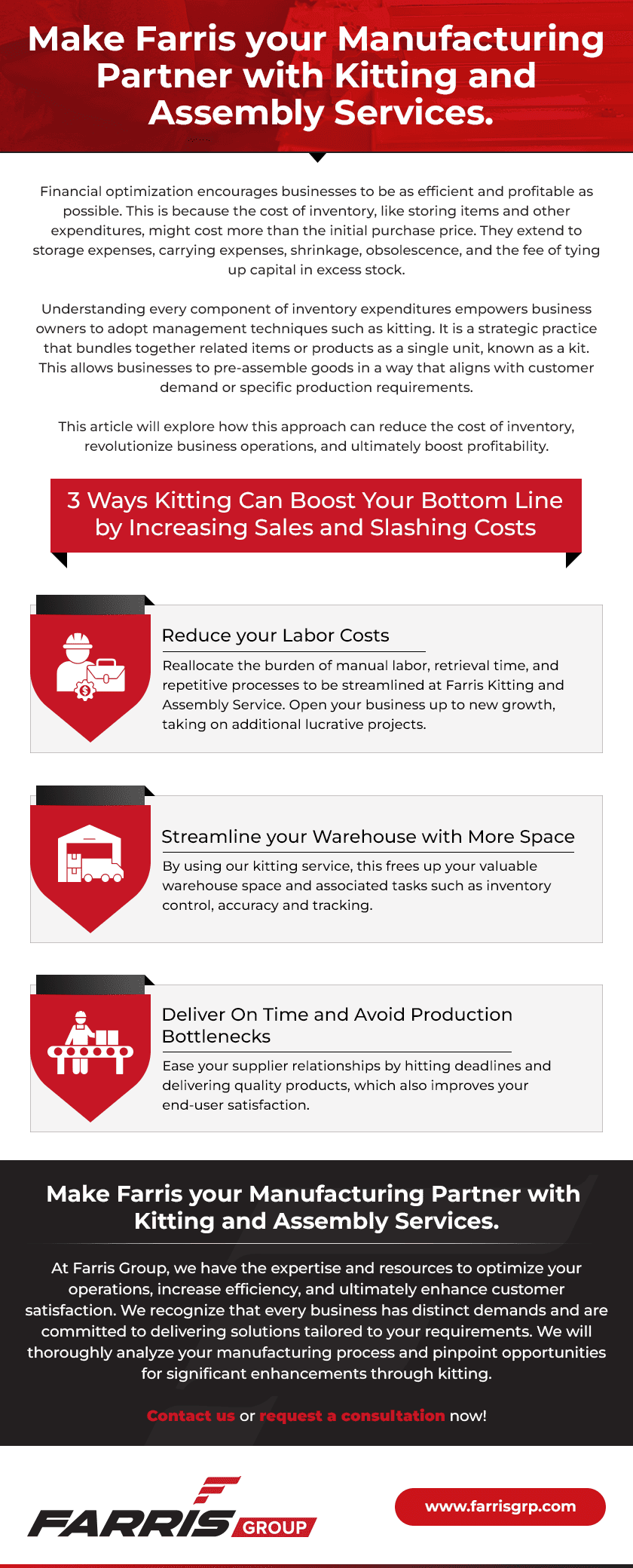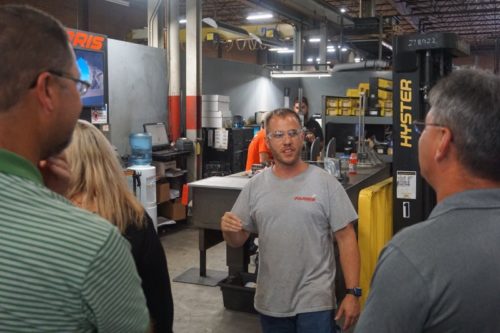7 Reasons to Partner with a Kitting Service Provider
Adding something as simple as a kitting service to your process can help to solve supply chain issues, improve efficiency, reduce errors, and enhance inventory control in various industries such as automotive, electronics, and aerospace. It can speed your time to market (TTM), often resulting in a higher customer satisfaction rate.
Choosing a Kitting partner is crucial to ensure accurate and timely assembly of components, reducing production delays and errors. It also allows a business to focus on their core operations while outsourcing the time-consuming task of assembling kits.
Key Factors To Consider When Selecting a Kitting Service Provider
Businesses must consider the following factors when choosing a partner for their kitting needs:
1. Quality Control
Your reputation is everything and a proactive approach minimizes the likelihood of substandard products reaching customers, safeguarding the brand reputation and reducing warranty claims. Choosing a reputable kitting provider with stringent quality control processes can identify and rectify defects early in the assembly process. Furthermore, a company committed to quality control will likely have a continuous improvement culture. They regularly review and enhance their processes to identify opportunities for optimization and efficiency gains.
2. Time to Market
Timely delivery of kits ensures that the manufacturing processes stay on schedule. Delays in kit delivery can disrupt production timelines, causing bottlenecks and potentially leading to missed customer orders. Moreover, meeting promised times enhances a company’s reputation and builds customer trust. This can lead to repeat business and positive word-of-mouth recommendations.
3. Experience and Reputation
An experienced kitting provider has likely encountered various challenges and situations in the industry. Their longevity in the field suggests that they have successfully navigated these issues. This gives the business confidence in the partner’s ability to meet its needs. Experience also guarantees a deep knowledge of industry-specific requirements and best practices, which are invaluable in ensuring that the kits are assembled correctly and efficiently.
4. Compliance and Certification
Providers with industry-specific certifications demonstrate a commitment to maintaining high-quality standards. These accolades signal that the company has established processes and procedures to ensure the accuracy and consistency of assembled kits. Additionally, choosing a certified partner reduces the risk associated with defective assemblies.
5. Geographic Location
The distance between the manufacturer’s facilities and the kitting service provider’s location directly affects shipping costs. Greater distance can lead to higher transportation expenses, which can impact the operational budget. Contrarily, having a partner nearby can be beneficial when dealing with urgent orders or unforeseen production challenges.
6. Scalability
Many companies experience fluctuations in demand throughout the year, often due to seasonal variations or market trends. Scalability ensures that the kitting provider can scale production up or down, preventing overstocking during slow periods or bottlenecks every peak season. This agility is also beneficial when the business needs to fulfill customer orders promptly or respond to unexpected demand surges.
7. Technology Integration
Integrated technological advancements enable faster and more efficient order processing. When orders are automatically transmitted to the service provider’s system, they can instantly begin assembly. This reduces lead times and guarantees timely request fulfillment. In addition, automation minimizes the potential for human errors in data entry.
Make Farris Your Trusted Kitting Partner
At Farris, we offer high-quality kitting services tailored to your unique needs and requirements! We delve into the specifics of your supply chain dynamics, ensuring that our solutions align perfectly with your objectives. This analytical approach allows us to identify inefficiencies, streamline processes, and maximize cost-effectiveness.
Contact us or request a consultation now!






